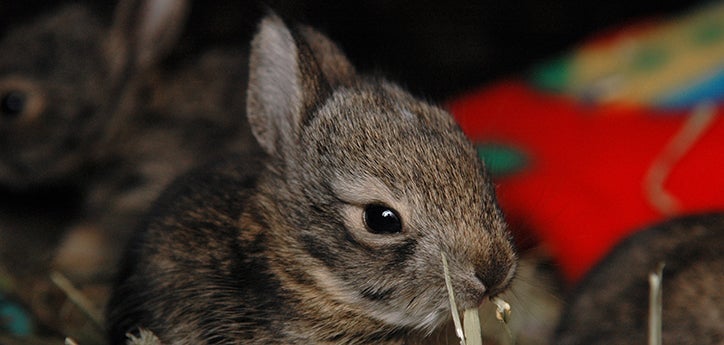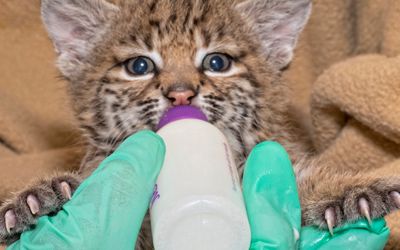Comprehending the Requirement for Animal Control Burlington in Urban Environments
Comprehending the Requirement for Animal Control Burlington in Urban Environments
Blog Article
Efficient Wild Animals Removal Approaches for a Peaceful Home Atmosphere
In the search of keeping a peaceful living room, property owners typically encounter the challenge of wild animals breaches, which can disrupt the peace of their setting. Carrying out reliable wildlife elimination methods calls for a nuanced understanding of both gentle exemption techniques and preventative procedures. By resolving entrance factors and minimizing attractants, one can dramatically decrease the chance of unwanted visitors. The intricacy of these strategies typically demands a closer exam of particular approaches and the possible demand for professional treatment. What are the key elements of these techniques, and when should one take into consideration seeking expert aid?
Identifying Common Wildlife Intruders
Recognizing common wild animals intruders is a crucial primary step in effective wildlife management. Comprehending the details varieties that often penetrate domestic and industrial rooms allows residential property owners and wild animals experts to carry out targeted strategies for minimizing possible damage and health dangers. Common burglars commonly include raccoons, squirrels, bats, and numerous types of rats and birds, each bringing special obstacles.
Bats, while helpful for controlling insect populations, can come to be a nuisance when they roost in attics, potentially spreading out conditions such as histoplasmosis. Birds, consisting of pigeons and sparrows, usually develop unhygienic conditions with their droppings, leading to structural degradation and health problems - burlington animal control.
Humane Exemption Methods
Comprehending the usual wildlife burglars is the structure upon which reliable exclusion strategies are constructed. Determining species such as raccoons, birds, and squirrels helps in designing humane exemption methods tailored to particular habits and access approaches. Exclusion is a preventative approach targeted at rejecting wild animals access to homes and homes, hence lowering the requirement for even more intrusive actions.
The cornerstone of humane exemption includes securing potential entrance points. This includes fixing openings in structures, roofs, and walls, along with mounting chimney caps and air vent covers. For smaller intruders like bats and mice, making use of products such as steel woollen and caulk to seal spaces is crucial. Furthermore, making sure that doors and home windows are protected, and that screens are undamaged, can even more hinder entry.
Mounting motion-activated lights or ultrasonic devices can inhibit nighttime wildlife. These exemption methods not only safeguard the home environment however additionally appreciate the wildlife, allowing them to thrive in their natural habitats without injury.
Safe Capturing Methods
When exemption methods want, safe capturing techniques come to be a necessary option in wild animals management. Trapping, when performed properly, uses a humane and reliable methods of attending to an immediate wildlife problem while making certain very little tension and injury to the animal. This method requires an understanding of both the behavior of the target varieties and the honest factors to consider included in wildlife handling.
These traps need to be examined often to prevent unnecessary anxiety or injury to the recorded wildlife. It is important to adhere to neighborhood laws concerning capturing and moving to make certain conformity with legal requirements and wildlife preservation concepts.
In addition, bait selection and placement are vital elements in making certain successful trapping. Lure needs to be selected based on the dietary preferences of the target varieties and purposefully put to lure the pet right into the catch. Once entraped, the pet must be handled with care, using protective gear if essential, to assist in safe transportation and launch, thus maintaining a balanced community and a calm home environment.
Preventive Home Adjustments
While secure capturing methods deal with immediate wildlife concerns, long-lasting remedies commonly require preventative home modifications to deter animals from entering human areas. Implementing these modifications not only improves the safety and convenience of your living setting but additionally reduces the likelihood of future wild animals breaches.
A crucial element of preventative strategies is securing potential entrance factors. This includes find out here now checking and repairing any voids or fractures in the structure, walls, and roof, as these can end up being accessibility paths for wildlife. Mounting chimney caps and repairing busted vents can stop birds, bats, and rodents from obtaining entry. Similarly, safeguarding doors and windows with weather stripping and mesh screens adds an additional layer of security.
Landscape design modifications can likewise act as effective deterrents. Cutting tree branches that overhang the roof and getting rid of particles piles can get rid of paths and habitats that bring in wild animals. Keeping a clean backyard by protecting garbage can and garden compost piles inhibits scavengers such as opossums and raccoons.

When to Call Professionals,##.
Professional treatment comes to be vital in situations where wildlife issues go beyond the scope of DIY options. Homeowners might come across conditions where the intricacy or danger of the wild animals trouble demands specialist know-how.
Additionally, problems involving safeguarded or endangered species call for a nuanced technique to abide by legal regulations. Experts are geared up with the necessary authorizations and understand the lawful frameworks regulating the handling of such species. This ensures that elimination is conducted morally and within lawful boundaries.
Last but not least, find out when wildlife presents a consistent problem despite repeated DIY efforts, professional services can offer thorough evaluation and lasting options tailored to stop reoccurrence - burlington wildlife rescue. Their experience not just settles the instant concern yet likewise safeguards the home environment in the future
Final Thought
Implementing efficient wild animals elimination strategies is crucial for keeping a blog tranquil home atmosphere. With each other, these approaches create an unified living room free from wildlife disruptions.

These exclusion methods not just secure the home setting however also respect the wild animals, permitting them to prosper in their natural habitats without damage.
Implementing effective wild animals elimination techniques is necessary for keeping a serene home environment.
Report this page